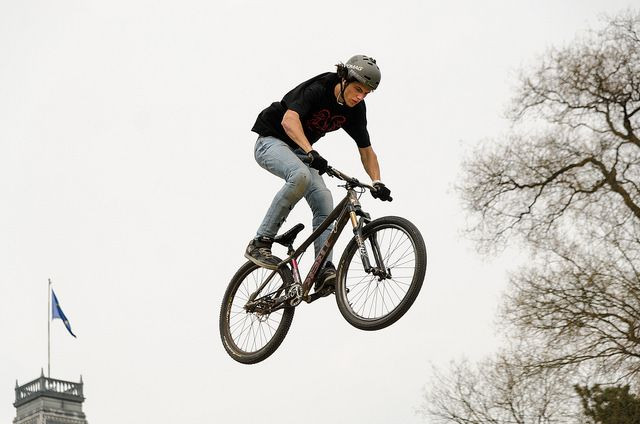Wearing A Helmet Increases Risk-Taking, Even If Safety Gear Is Not Necessary To Task At Hand

We unconsciously adjust our behavior based on our perceptions of safety. For this reason, protective gear might work to our disadvantage, a University of Bath research team says. Wearing a helmet is likely to increase our sensation-seeking and risk-taking, which could make us less safe overall, their new study suggests.
Several past studies have examined risk compensation, finding evidence to suggest people might drive differently when wearing seatbelts or make more aggressive tackles when wearing football helmets. In these past experiments, the safety device linked directly to both the activity and participants’ awareness. There's a certain logic, say the researchers behind the current study, to athletes becoming more aggressive when they put on special equipment intended to make them safer.
Aware of new protections, most of us are inclined to press harder — but what about those times when we are not conscious that a safety precaution has been introduced?
Unintended consequences
Dr. Tim Gamble and Dr. Ian Walker used a computer-based simulation as the basis for a study involving 80 participants between the ages of 17 and 56.
First, the psychologists established an elaborate pretense of conducting an experiment concerned with vision abilities and then they split the participants into two groups. Half the participants were given a bicycle helmet decked with an eye-tracking device, while the remainder were handed a baseball cap incorporating the same device. All were told to wear the head gear, necessary as a support for the device vital to the experiment.
Next, participants were tasked with inflating an animated balloon on their computer screen. Each time the balloon became fully swollen, participants earned points that they could bank. If the balloon burst, though, all their earnings would be lost.
Over 30 trials, the researchers tested each participant’s tendency to keep inflating the balloon. This activity served as a proxy for risk-taking. When the experiment ended, the researchers compared the performance of the two groups of participants, those wearing a cap to those wearing a helmet.
Thirst for Risk
Participants wearing helmets scored significantly higher on measures of risk-taking and sensation-seeking (as defined by the experiment).
According to Gamble and Walker, even this “unconscious activation of safety-related concepts” primed the pump, inclining each participant toward risk. Their experiment was essentially a gambling task and a helmet could make no difference whatsoever to the outcome; still people wearing protective gear took more risks than those wearing a simple cap.
Based on this outcome, the psychologists believe safety equipment might not be as effective as many people assume. A recent University of Toronto study bears this out; The researchers found the prevalence of head injuries did not change following enactment of helmet laws. Believing ourselves protected, we apparently dare even more.
Source: Gamble T, Walker I. Wearing a Bicycle Helmet Can Increase Risk Taking and Sensation Seeking in Adults. Psychological Science. 2016.
Published by Medicaldaily.com



























